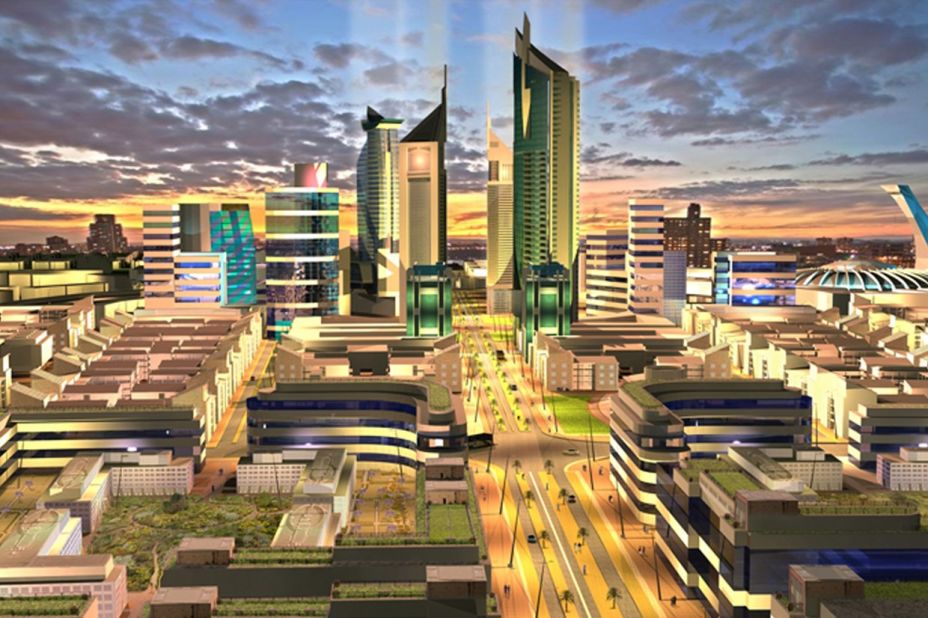The smart city movement has been steadily gaining traction over the past few years, with major cities like Toronto and Singapore making digitalization a major part of city life.
This trend has now extended to Africa and the Middle East, showing significant promise in cities like Cairo and Casablanca, and featuring plans for a new urban city in Oman. Urban transport, waste management, and building energy efficiency are just a few sectors benefiting from advanced technologies in these cities.
Casablanca: Pioneering Traffic and Waste Management Technologies
Casablanca, one of Morocco’s most beautiful cities, became the first African city to join the network of 25 smart cities identified by the US-based Institute of Electrical and Electronics Engineers (IEEE) in 2015.
The city, managed by Mayor Nabila Rmili, has been at the forefront of using remote traffic management systems. A network of 760 surveillance cameras connected to a 220-kilometer-long fiber optic cable serves a dual purpose: controlling road traffic and bolstering security in commercial zones.
Beyond traffic, Casablanca is pushing the envelope in waste management. With help from the French multinational company Suez, the city employs geographic information systems (GIS) to monitor and report urban cleanliness. Citizens can actively participate by indicating areas that need attention, contributing to the city’s cleanliness.
On the roads, the iTaxi app, launched in 2014, allows residents to hail a ride with just a tap on their smartphones, reducing the carbon footprint by decreasing the number of private cars in use.
Cairo’s Strides in Smart Homes and Energy Solutions
Egypt’s sprawling capital, Cairo, is not far behind Casablanca. Companies like Elsewedy are modernizing energy consumption with digital electric meters. With 2 million units already in use, these meters help consumers optimize electricity use and cut down on costs. The meters have even found a market in Lyon, France, illustrating Cairo’s growing technological prowess on the global stage.
Cairo’s smart city blueprint extends to “smart homes.” Advanced mobile applications allow homeowners to control their living environments remotely, enabling tasks like adjusting the thermostat or activating the lights.
These innovations have helped Cairo rank at 106th in the “Smart City Index Report” by the International Institute for Management Development in Lausanne, Switzerland.
Bridging the Digital Gap: The Case of Other African Cities
Following in the digital footsteps of Casablanca and Cairo, other African cities are exploring ways to use new digital technologies to promote sustainable development.
In Côte d’Ivoire, the city of Abidjan has embarked on a digital transformation. In collaboration with French company Dassault Systems, the city has started creating a virtual representation of the area to guide future planning.
However, challenges remain. In Oranjemund, Namibia, for instance, the focus is on solving the basic issue of internet connectivity. Teaming up with the City Transformation Agency, local officials are launching the Oranjemund Core Fibre Connectivity program to deploy 67 kilometers of optical fiber. It’s a vital first step in a town that is still largely unconnected.
The Future Landscape of African Smart Cities
According to the International Telecommunication Union, only 40 percent of Africa’s population currently has internet access, behind the global average of 63 percent.
A project called Digital Solutions for Sustainable Cities in West Africa aims to tackle this issue. Supported by the Excellence in Africa research center, cities like Abidjan, Bamako, Cotonou, and Ouagadougou are slated for digital revamps. These cities will explore fresh digital solutions to fortify their weather forecasting systems, given the recurring threats of climate hazards such as droughts and floods.
Oman’s Planned Smart City
While Africa makes significant strides in smart city development, it’s worth noting that many countries across the globe are also taking significant steps forward in this area. One such nation is Oman, located on the southeastern coast of the Arabian Peninsula. Oman is planning a state-of-the-art smart city that serves as a model for sustainable living, not just in the Gulf, but worldwide.
Known as Sultan Haitham City, Oman’s new smart city will accommodate 100,000 residents and cover an area of 14.8 square kilometers. Located in Al-Seeb, several kilometers west of the capital Muscat, the city aims to feature 20,000 homes, as well as educational institutions, health facilities, and mosques.
US architecture firm Skidmore, Owings & Merril (SOM) designed the project, which is set to be completed in four stages by 2045. The first phase, targeted to be completed in 2030, will focus on the city center and six out of 19 planned neighborhoods.
The city is part of Oman’s Vision 2040 initiative, aimed at reducing the country’s oil dependence and increasing the use of renewables. SOM’s design incorporates sustainable features like solar energy facilities, wastewater recycling, electric vehicle infrastructure, and waste-to-energy plants.
The architectural design also considers the region’s hot and humid climate, aiming for maximized shade and natural ventilation. A centrally located park is designed to manage floodwater, given the area’s vulnerability to seasonal flooding.

